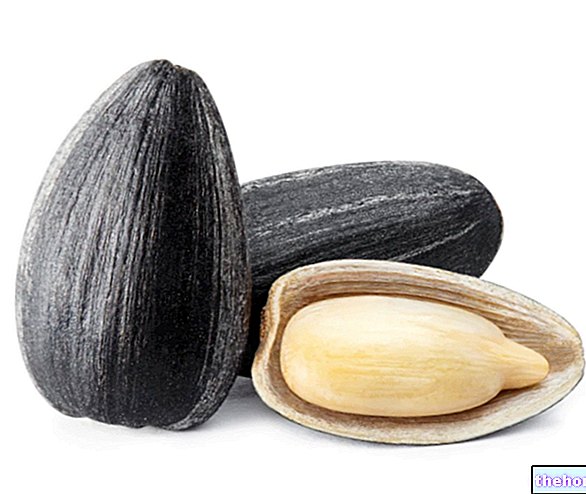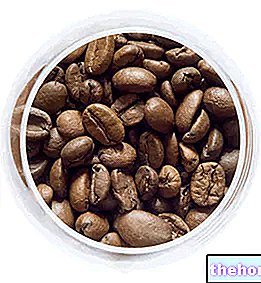Nowadays, the food industry that has entered the world of bakery in a disruptive way, supplanting the artisan one for years, has changed the scenarios: bread, in fact, is often not the natural product that one expects to bring to the table. essential element in our diet, as it contains high amounts of fiber, but also amino acids, vitamins, minerals.
According to the guidelines for a healthy Italian diet, about 55% of the daily calories should come from carbohydrates, therefore from bread, pasta, cereals. Even today, in Italy and in the world, bread is one of the most popular foods, even if consumer habits have changed considerably compared to the past.
Common bread is often demonized and considered an enemy of the diet, even if today the range of bread varieties on the market allows you to choose the type of bread that is most suitable for everyone's diet. We went back to natural, to bread without additives or preservatives, mixed with ancient grain flours or "untreated" and wholemeal cereals.
added you can have different types of bread:
- Common bread: it is based on more or less refined flour and brewer's yeast, with or without salt but without other ingredients. It is the cheapest, sold in sandwiches of around 50-60 grams each. Type 00 bread has 289 calories / 100 grams;
- Seasoned: in addition to the water, the liquid part is composed of an addition of fat, which can be: oil, butter, lard, milk, yogurt, the quantity of which is fixed by law. Milk sandwiches have 295 kcal / 100 g; oil sandwiches: 299 kcal / 100 g;
- Wholemeal or "dark": produced in different sizes, it can be made from complete flour only (with bran) or mixed with white flour and is acid-leavened. True "dark" bread is bread made with complete "wholemeal" flour or semolina, not a mix of "wheat flour with bran". Wholemeal bread has 224 kcal / 100 g;
- Special: bread in which, in addition to the basic ingredients, seeds (flax, chia, pumpkin, sesame, poppy), beer, wine, raisins, dried fruit, or spices such as turmeric are added;
- Cereals: composed of a mixture of various cereals -farro, kamut, rye for which it takes its name from the one prevailing in terms of quantity, for example "spelled bread". Rye bread has 219 kcal / 100 g; spelled bread has 211 kcal / 100 g; kamut bread has 359 Kcal / 100 g. Cereals are particularly suitable for iron intake, especially at breakfast;
- Precooked frozen: derives from a dough produced in an industrial oven, then stored in the freezer and browned at the point of sale.
Ordinary bread, which is naturally free of animal fats, does not contain cholesterol, and is rich in fiber, magnesium and mineral salts. Dark bread, obtained with unrefined wholemeal flours, is more complete and beneficial from a nutritional point of view, thanks to the content of essential fatty acids, enzymes and above all fibers.
Bread proteins are of vegetable origin, therefore not complete, for example, with essential amino acids to be found in the dish with which to accompany it. The nutritional picture varies according to the type of bread: caloric intake, sodium content, fiber, in fact, can be very different in relation to the ingredients that are added during baking and the type of flour used.
Depending on the cereals chosen, the bread will have different properties.
: contains insoluble fibers that help regulate intestinal transit, irritable bowel syndrome, prevent colitis and abdominal swelling. Choosing darker colored bread helps to understand its healthy composition: it must be prepared with whole grains, with 100% wheat flour, without supplements and additives.
- Pancarrè and sliced bread. Type of bread used to prepare toast or canapés, it contains more fat, more sugars and, often, also additives that serve to extend storage times, such as ethyl alcohol. It is less healthy than the traditional one, so it is good to consume it in less quantity.
- Refined cereals. It is not a harmful ingredient, but the refining processes impoverish the nutritional supply of cereals for the organism. In addition, refined foods are converted more quickly into sugars, causing blood sugar spikes, insulin resistance and hypertension.
- Fructose syrup. It is used to give the packaged bread its characteristic golden surface, as well as to increase leavening. Sweetener often used industrially for the preparation of sandwich bread, bread for hambuger or bagel, hot dogs, it is an unhealthy ingredient because it would contribute to the onset of metabolic, liver, hypertension and obesity diseases.
- Azodicarbonamide. Additive used to make the bread softer and improve its structure. It can cause asthma and allergic reactions.
- Ingredients to check on the label. Avoid buying packaged bread that contains chlorine and chlorine dioxide, liposidases, persulphates, ammonium sulphate, acetonperoxides, calcium phosphate.























-nelle-carni-di-maiale.jpg)




